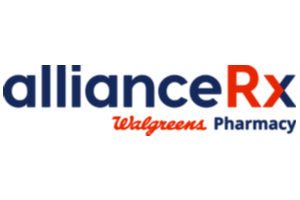SPONSORED CONTENT
The healthcare industry continues to evolve. We see this evolution range from technology advancements and self-serve digital platforms to competing payer coverages and vast access to both acute and maintenance medications. Throughout this evolution, the patient experience and continuity of care are crucial to supporting a patient’s journey throughout the healthcare ecosystem. Here are six ways specialty pharmacies like AllianceRx Walgreens Pharmacy can help ensure the patient experience also evolves:
- Communication – Clinics and professional practices should consider the most effective form of communication, including digital and self-serve platforms. A patient’s perception of the quality of healthcare is highly dependent on the quality of their interactions with their healthcare team. It is important that health systems and providers review the channels of communication they and other stakeholders use to support the patient.
- Medication Access – In reviewing the acute and ongoing needs of patients, physicians should determine which drugs are accessible within the market and best suited for their patient’s needs. Next, they should determine which pharmacies have access to patient-specific or limited distribution drugs, such as AllianceRx Walgreens Pharmacy, that best meet their patient and contract pharmacy needs. Providers should work with wholesaler and pharmaceutical manufacturer partners to expand drug access where possible. Additionally, reviewing wholesaler accounts in detail will help ensure providers are getting access to the correct price for each drug.
- Payer Access/Copay Assistance – When considering the community of patients served, health system leaders should review payer contracts currently in place, and those not available. Assessing which pharmacies they work with including retail, mail order or specialty will help show which assistance programs support insured or uninsured patients to help offset drug costs. Lastly, connecting with pharmaceutical manufacturers who may offer copay or patient assistance programs for high-cost medications may also benefit patients.
- Clinical Management – As patient outcomes and adherence remain a focused priority, it is important to consider the clinical management systems in place that drive and capture patient interactions. These digital platforms can quickly adapt questions and scripts in real time based on patient-specific variables. Interactions can also be customized based on a patient’s individual situation. Data collected during these patient interactions can improve outcomes and help maintain continuity of care within the patient healthcare ecosystem.
- Adherence – When reviewing patient metrics for the health system, a 360-degree approach may help improve patient outcomes and adherence. Health care providers from health systems, pharmacies, payers and pharmaceutical manufacturers should review the systems in place to predict and track patient behaviors that allow monitoring of the patients’ journeys. Additionally, reviewing all available channels may help elicit patient feedback such as surveys, connected care platforms, and 360-feedback loops with pharmacy, payers and drug manufacturer partners. Non-adherence is typically driven by four factors:
- Patient factors (e.g., social and economic wellbeing)
- Condition factors (e.g., the experience with the disease itself or the amount of different health care providers with whom a patient interacts)
- Drug factors (e.g., access to a drug or its side effects)
- Health system factors (e.g., limited access to a specialized facility or the limitations of insurance coverage)
- Support – When reviewing a patient’s ability to stay adherent with their treatment plan, all stakeholders supporting a patient’s journey should keep in mind the five domains of social determinants of health which play a large role in the support a patient receives. These include:
- Economic stability
- Education access and quality
- Healthcare access and quality
- Neighborhood and built environment
- Social and community context
Health care providers should connect with healthcare partners who mutually serve their patients and determine which services can be provided to offset any disparities impacting a patient’s health, well-being and quality of life.

Robin George is Director of Health Systems Solutions at AllianceRx Walgreens Pharmacy. He can be reached at robin.george@alliancerxwp.com.



